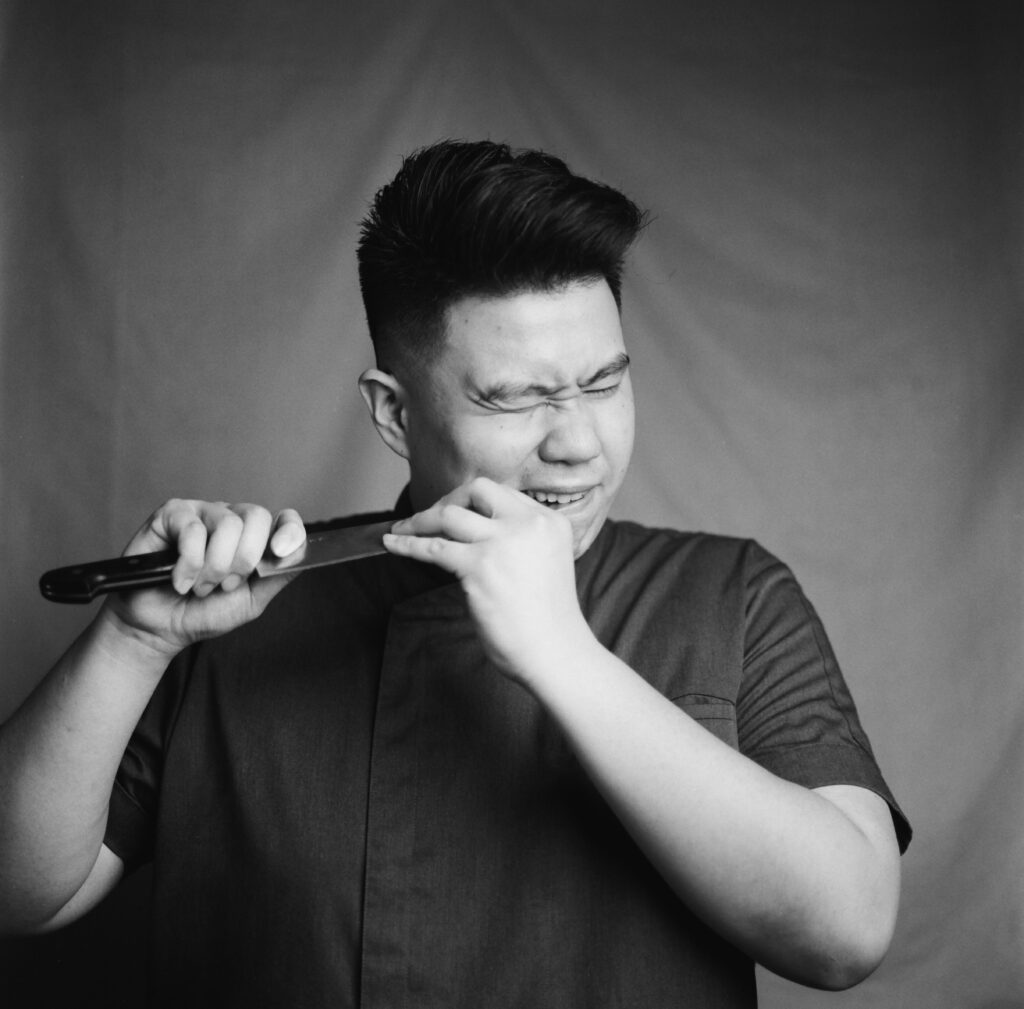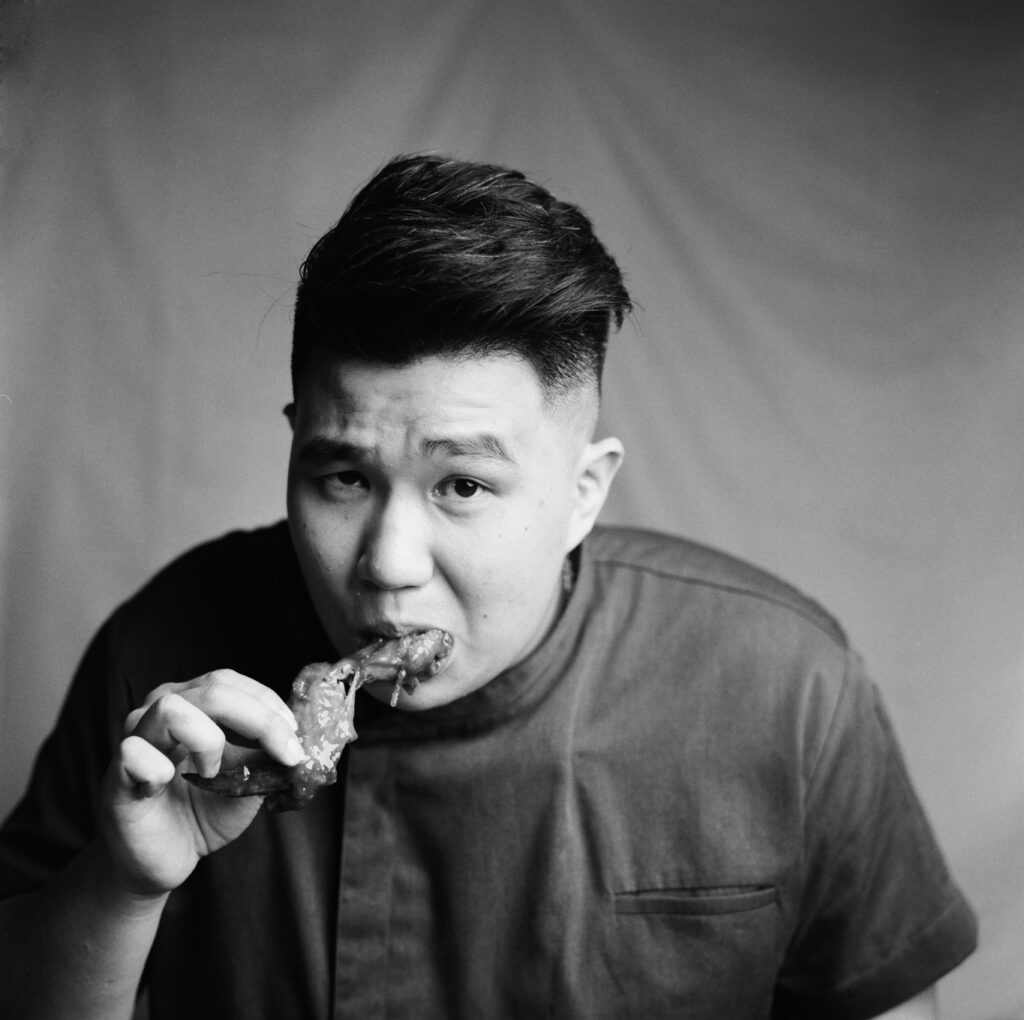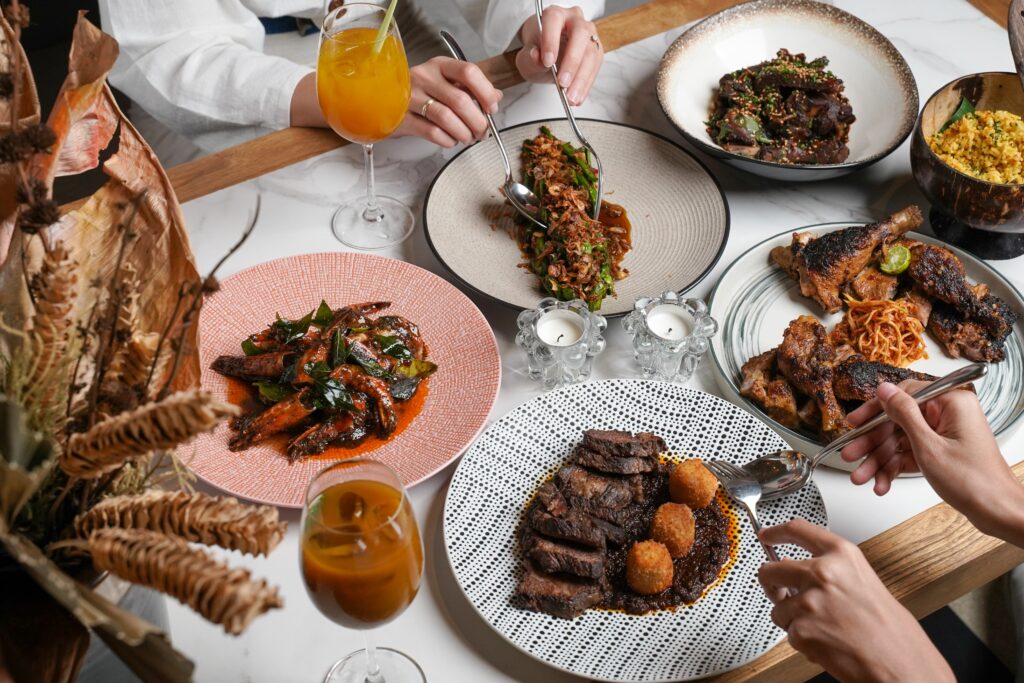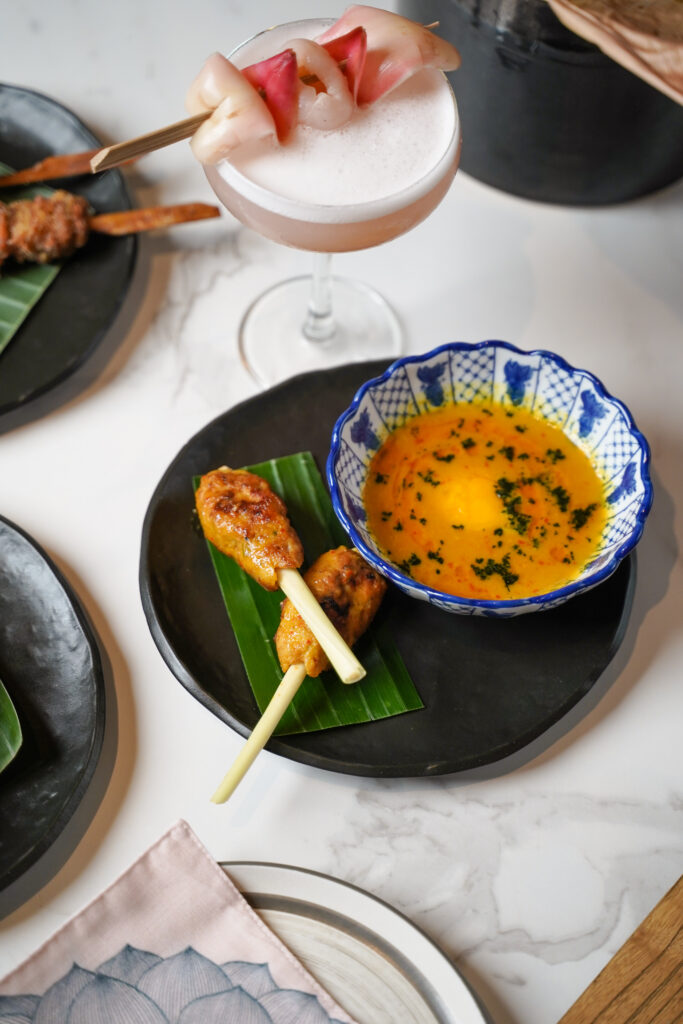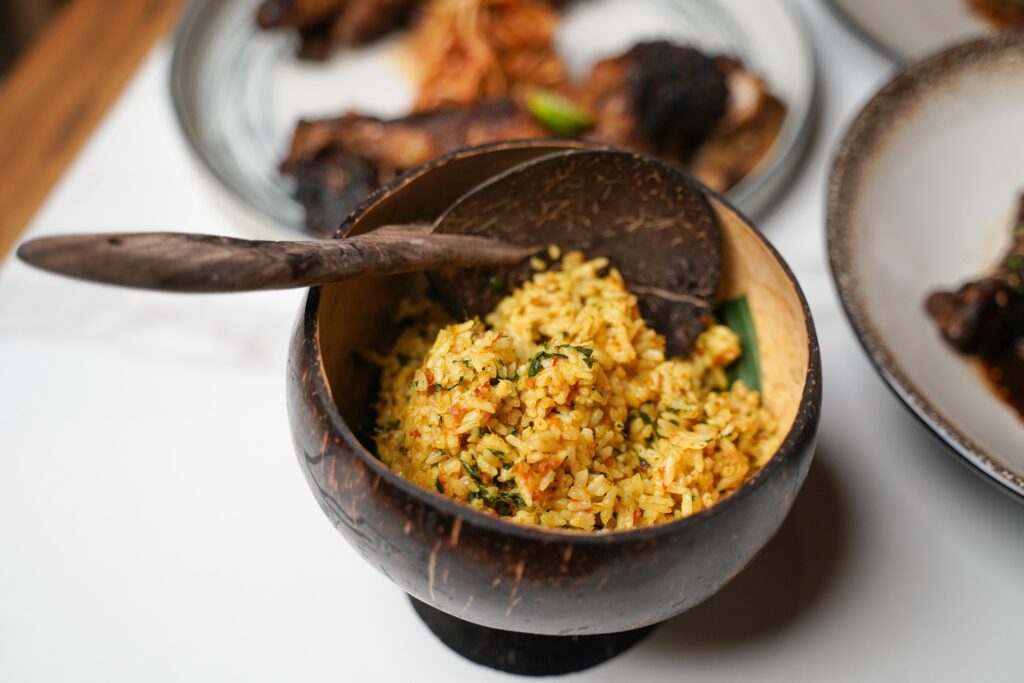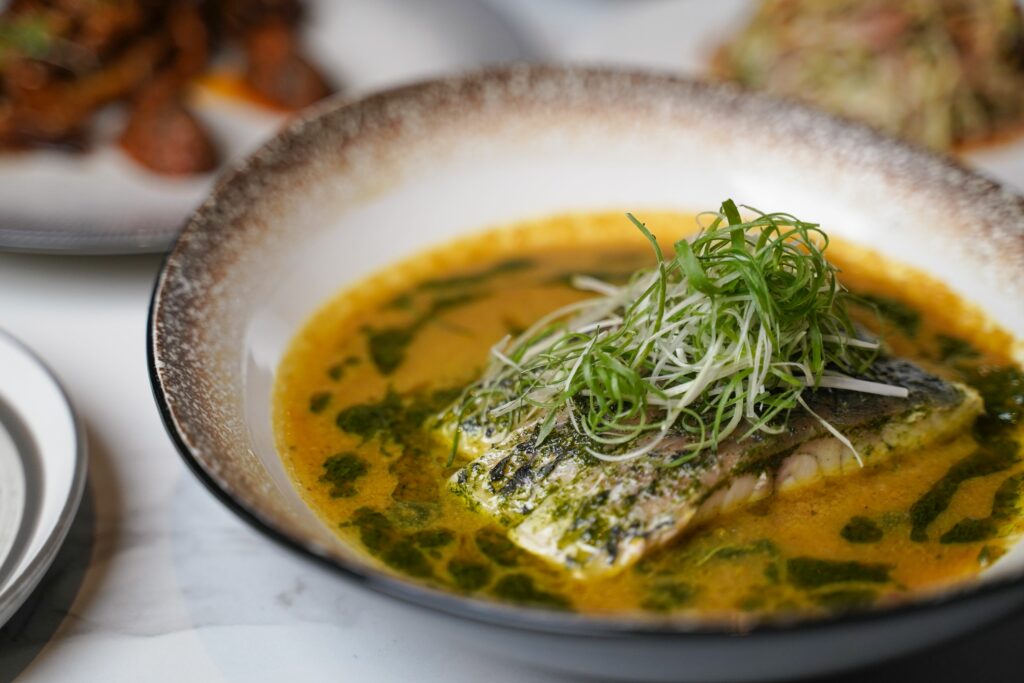The chef who shares a same name with the famous title character and protagonist in the hit TV series MacGyver is pretty much as skillful as the fictional character. The difference will be that the latter is skilled in military tactics and combat, while Mac is skilled in kitchen tactics and combat (read: kitchen management, recipe development, cooking techniques, etc.).
When we asked him about how he ended up in the kitchen, his answer was pretty straightforward. “I really love to eat— more than cooking maybe. I think cooking just supports that hobby. Hahaha!” Always full of life and zest, the self-taught chef could go on and on when talking about food and cooking. One only needs to spend a few minutes with Mac to see his passion in what he does.
This passion is exactly the fuel and energy that drives him through to become a chef. Although he has always loved food and has had the ability to recognize distinct flavors since he was a child, he didn’t really follow up on that interest. Instead, he said that he tried to fit into a life that was more expected of him, which was to pursue higher education and upon graduating, took a job as a financial analyst.
It took an accident to make him realize that the life that he wanted was not the one that he was living. “I had a knee injury. It was pretty bad and the doctor prescribed me painkillers. One day I accidentally took too much of it and, during that moment when I was under the influence, I had this vivid vision: I was in the kitchen, cooking and managing the staff there like a pro, and I spoke in fluent French—I don’t speak any French in real life.”
Call it a trip, a high, or an epiphany, the experience created an awareness in Mac and reignited an old flame. “I realized that if I stripped everything off, if I have nothing, the only thing that would make me happy and bring me joy is cooking.” He left his consulting job and, because he couldn’t afford to go to cooking school, applied for work in a famous Italian restaurant in Seattle, where he was based at.
“It was an unpaid job and I started as a dish washer.” He told us that when he first held the plates, it was “the happiest moment of my life. I felt like I was in control of where I am going to go next. Success or failure is in my hands for sure, there’s no way around it.”
He worked from 9 am to 2 am daily. “It was hard and challenging because it was an unpaid job and I didn’t have much savings after leaving my previous job. I had to give up a lot of things and I risked so many things. It’s either I make it or I don’t,” he said. Over the next few months, his grit and drive helped worked his way up in the kitchen until he became a cook. “I set myself a goal: I need to have my own restaurant by the time I turn 27 years old, or latest when I am 28. I was 21 at that time.”
The chef’s son noticed his talent and his eagerness to learn more, and offered him to intern at Eleven Madison Park. Without much thinking, Mac packed his backpack and headed to New York. He settled into a tiny room in Chinatown (the only thing that he could afford at the time), and started his next chapter—of diving into the world of fine dining.
“That’s when I really dived into French cooking. I learned what it means to be a pro. Fine dining is all about precision—the level of precision that we can execute is what differentiates the pros from the amateurs.”
Aside from sharpening his skill in professional kitchens, Mac honed his cooking techniques via the more traditional and accessible way—from books. “I bought a lot of second hand cooking books, one at a time because it’s expensive. I read each of them and go deep into it and I try to understand how the chef thinks. I break down every single ingredient—what does each ingredient do to the dish, what is it trying to do here, why is every component here?”
“I had to work harder than everyone and I had to be hungrier than anyone out there—who went to cooking school, and thus have all the knowledge, fundamentals, and foundation. In cooking, there’s no luck; you need to have that sense and awareness.”
After New York, he came back to Indonesia to spend some time with his family, bringing along his treasured books. He then moved to Singapore and worked for Emmanuel Stroobant at Restaurant Saint Pierre (now a 2 Michelin-starred restaurant), a French Japanese restaurant which uses French cooking techniques paired with Japanese ingredients.
“That was when I learned to be a professional chef, not a cook. How you carry yourself, how you manage the kitchen, how you run the service, how you should think about food. All the discipline, rigor, and intensity. A lot of the very talented team at that time now have their own successful and award winning restaurants.”
Despite his rather impressive journey and experience of working with some of the best names in the industry, he’s somewhat dismissive when it comes to résumé or CV. “I think it’s overrated, it’s not important now. You can put whatever in there, but when you’re cooking, what is your soul, your story? I want people to know Akar for the food not because of my CV.”
Mac’s love for Indonesian food and cooking ultimately led him to return to Indonesia. He then set up Akar within a year of returning, after meeting a group of likeminded people who became his partners. The name itself, Akar (meaning “root” in English), represents the start of a new beginning, “Or a beginning to an end,” he said, rather philosophically.
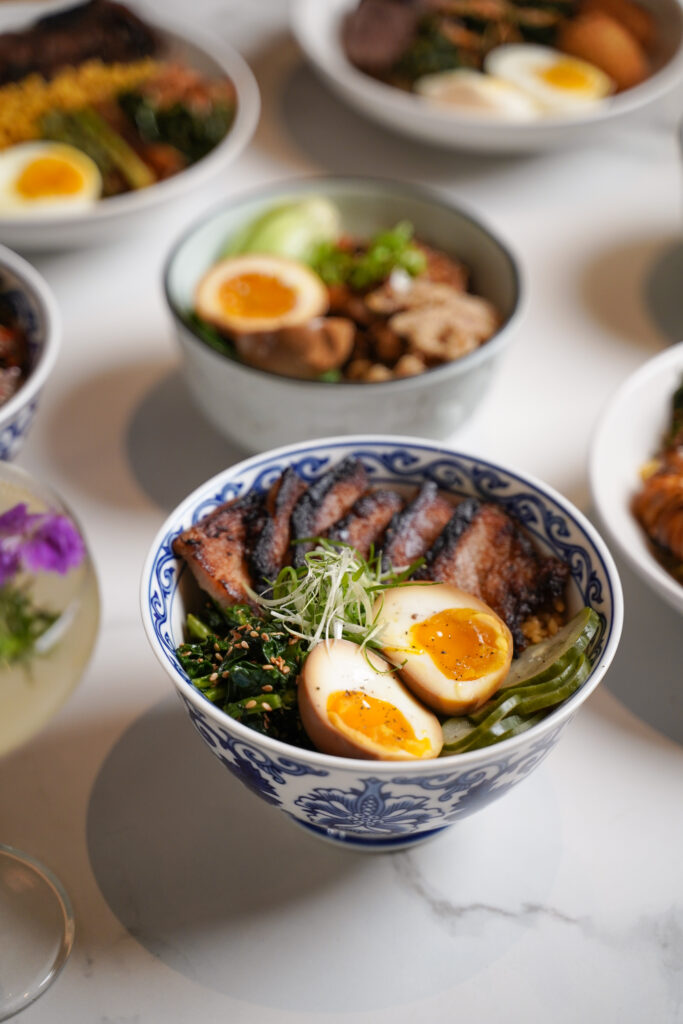
Taken literally, the root of his cooking is, naturally, Indonesian food, which he reimagined for Akar. “I think we have been stagnant for too long. By this I mean that we often look down on our own culinary richness, which is actually highly appreciated out there! I feel that we have to progress—but can I progress with a lot of love and understanding? Can I create what my parents can enjoy and what your parents can enjoy too? I don’t cook just for myself or merely as a self-expression. I am not an artist, I am chef. I have a job and that job is to make sure the food is good and also relatable to my culture.”
Speaking of parents, Mac admitted that his parents, especially his mother, influenced his cooking a lot. In fact, the backbone of Akar’s early days’ menu were built on his mother’s recipes, but expressed differently in a more creative and experimental way using different techniques that he picked up along the way. “But she’s always pissed off because I don’t cook like her—she’s very precise. I’m bastardizing her recipes. Hahaha.”
One of the most popular dish in Akar that has elements taken from his mother’s recipe is Nasi Babi Panggang Kencur (Rice Bowl with Sand Ginger Grilled Pork Neck). The savory and sweet kencur (sand ginger) sauce used in the dish is his mother’s recipe, which has a Peranakan background.
Being explorative and progressive for Mac, who touts bakmi and Indomie as his comfort food (“The love of my live,” her articulated), is translated into taking local ingredients and recipes, and then finding the parallel in other cuisines, be it French, Italian, Japanese, or Argentinian, to create a breakthrough.

Open Akar’s menu and you’ll understand his approach. There’s noodle dishes (obviously), elevated with Pork Neck Char Siu and Ramen Eggs toppings, taking influence from Japanese style ramen. More Japanese influence can be seen in Lilit Ayam Style Tsukune, a satay dish inspired by Bali’s sate lilit but with the addition of izakaya styled egg yolk dip, which is mixed with gulai sauce for more of that Indonesian touch.
A combination of his Chinese and Indonesian roots, paired with his time in the US and Singapore, created the dish Pepes Udang Toast. The dish took one of the most popular Chinese American dish: prawn toast, topped with pepes udang which bears similar flavor profiles with Singapore’s Otah.
Another more elaborate dish and one of Akar’s signature is Bistik Kenangan, which has a root in Javanese Chinese. Here in Akar, the nostalgic dish is prepared using Black Angus Tomahawk, paired with Kemangi Chimmichurri, sambal matah, Perkedel mashed potatoes, and sambal-glazed charred corn. The dish is best shared with friends and family, and washed down with Akar’s tastefully curated cocktail drinks, many of them made using Indonesian Arak.
“Good food should have a charisma, like those hole-in-the-wall places serving humble yet amazing food that I grew up with. That’s why I want Akar to be less pretentious. We don’t do any fancy garnish or elaborate plating. We want to serve honest food—food that has a lot of connection with people. We want to trigger a certain memory or transport you to a point in time. We want to create food that creates that kind of conversation,” he added.
Sustainability is the direction for Akar next—the restaurant plans to use more, if not all, local ingredients. The past few months has seen Mac and his team spent a lot of time and energy in sourcing, tidying up the supply chain, and taking out imported products from their ingredients, and eliminating plastics from their packaging, all in an effort to reduce carbon footprints.
“The biggest challenge about sourcing local produce is that there’s not much artisanal produce in Indonesia, most are just driven by margin and volume. But I believe we will see more artisanal produce in the future, run by the people who cares about what they do and where their food comes from.”
Seeing the crop of passionate and talented young chefs and producers budding into the local culinary scene in the past years, the future that Mac referred to might not be too far off. And one of this new generation’s highly positive culture is the culture of collaboration. In Akar, Mac has collaborated with many of his fellow chefs, from the well-seasoned ones like Chef Ragil of Nusa Gastronomy, Ray and Eelke of Locavore, to the young guns like Mega Patiung, and soon with Hans Christian and Ardika Dwitama of August, and Sydney’s Bennelong’s alumni Kesia Putri.
The amount of passion that Mac presented has certainly driven him to get up and go everyday, but it’s not uncommon to get burnt by it too. So how does he unwind? “Well, after a long and hard day, I will usually have a few drinks and eat my favorite food, either instant noodle, dimsum, or bubur ayam. But as I got deeper and deeper into the world of cooking, I fall in love with it even more every day. No matter how tough it is, I am still in love with what I do,” he said, with a glass of wine on his hand, as we closed the interview that evening.
AKAR dine-in, to-go, and events will be available starting June 2021 through prepaid booking, exclusively on SELESA.
The Deets
| Location | AKAR |
| Address | Jl. Gunawarman No.41, RT.4/RW.7, Rw. Bar., Jakarta, Kota Jakarta Selatan, Daerah Khusus Ibukota Jakarta 12110 |
| Opening Hours | Tuesday – Sunday: 11AM–8PM Monday: Closed |
| Phone | +62 812 9156 0550 ( 📞/ Whatsapp) |
| @akar.jakarta | |
| Type | Progressive Indonesian Restaurant, Farm-to-Table |
[tribe_tickets post_id=”3936″]
[tribe_tickets post_id=”4026″]
[tribe_tickets post_id=”4022″]

